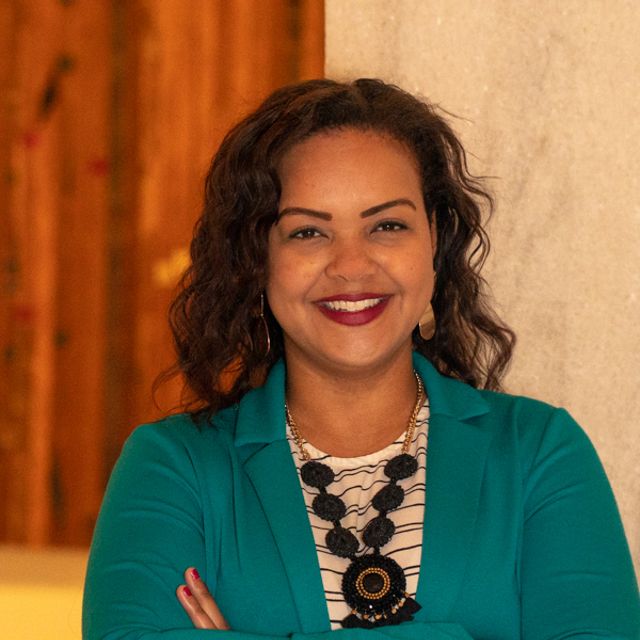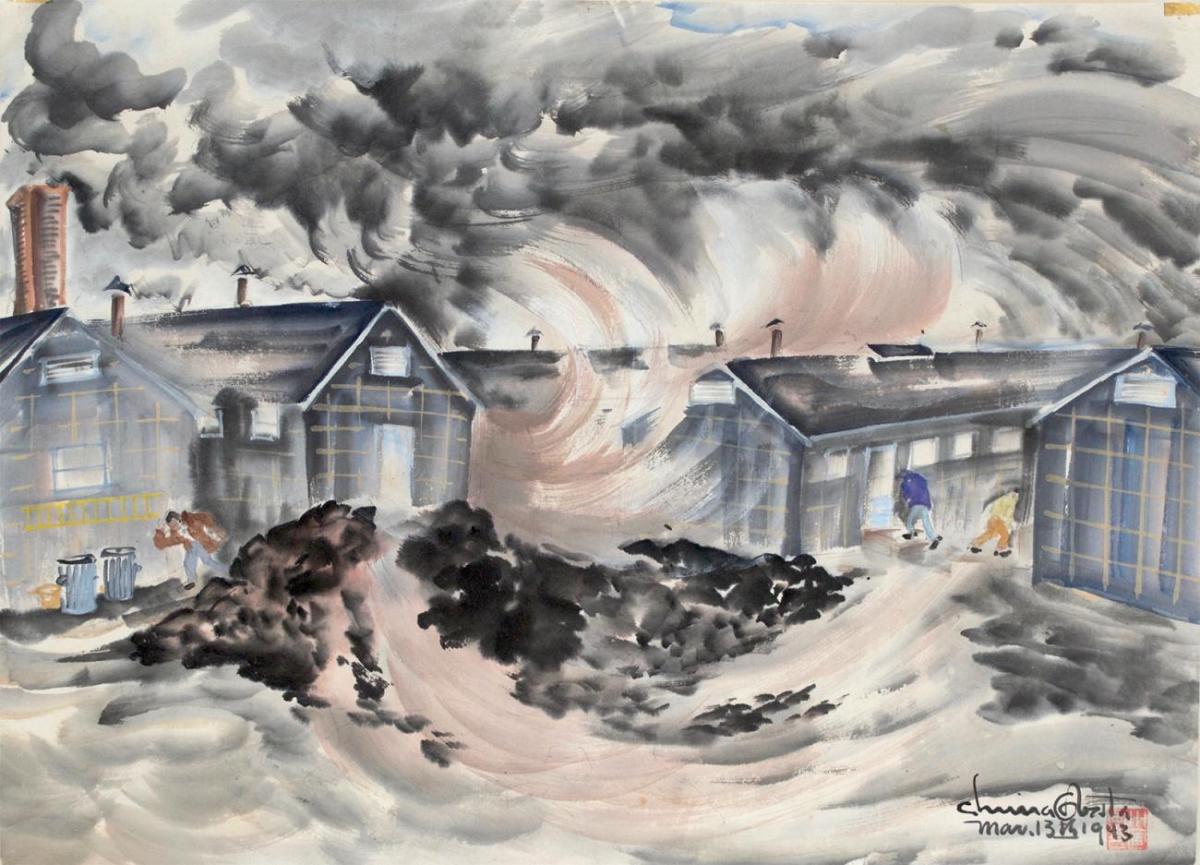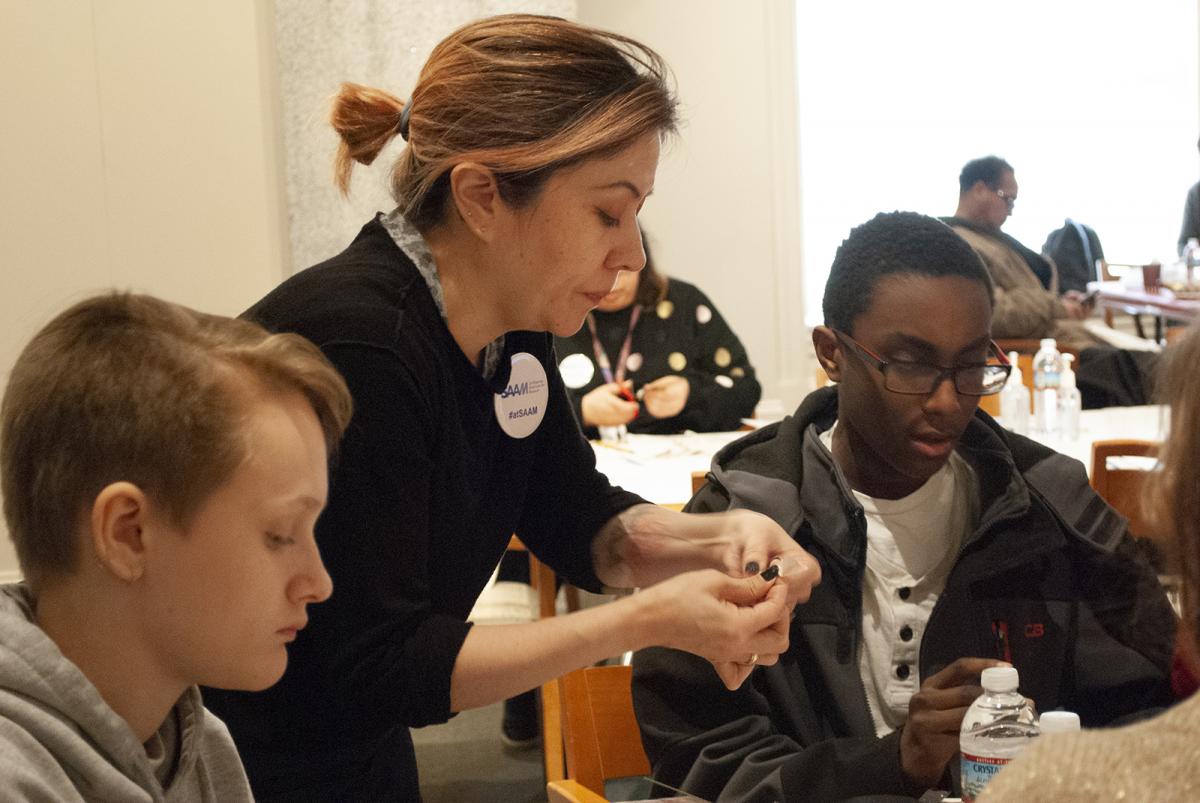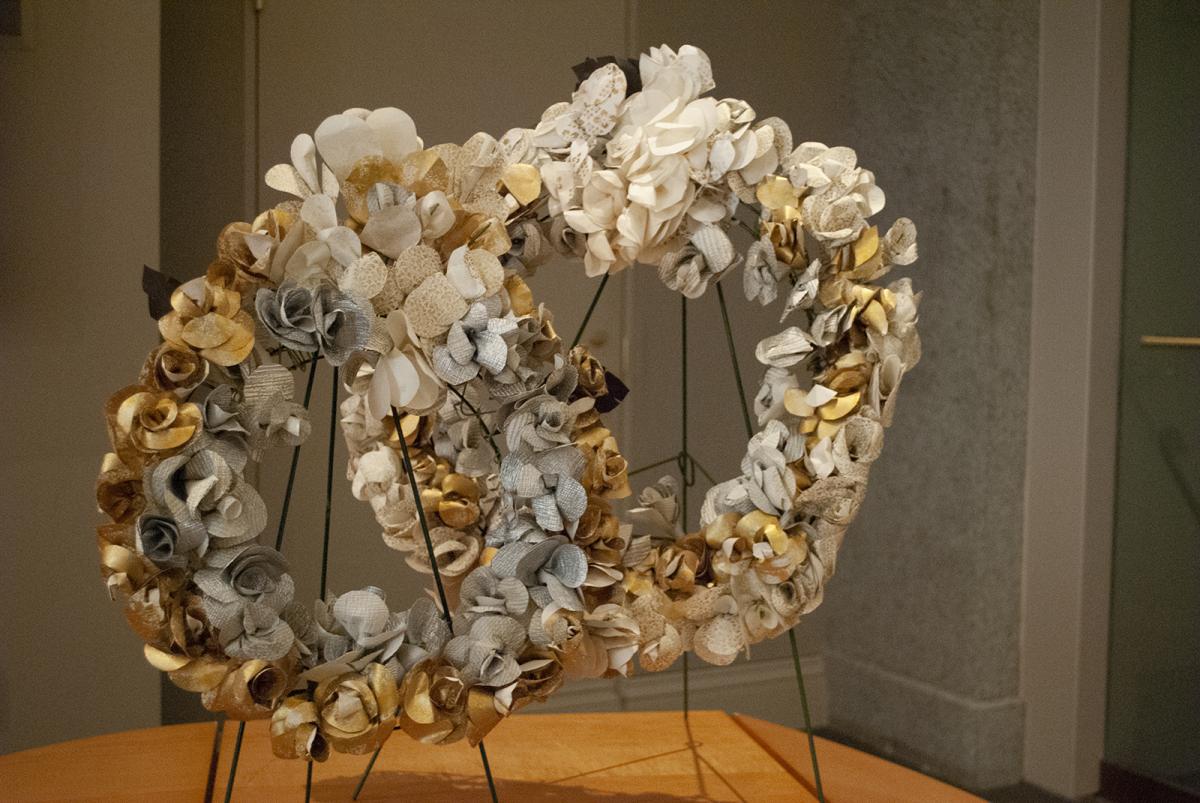
Hanging in the halls of of the Smithsonian American Art Museum, before it closed temporarily as a public health precaution to support the national effort to contain the spread of COVID-19, was the magnificent exhibition Chiura Obata: American Modern. SAAM partnered with the Smithsonian Asian Pacific American Center to host a teen arts workshop that focused on Obata's artwork and his experiences as a Japanese American in the incarceration camps during World War II. Eye Level talked with Kayleigh Bryant-Greenwell, head of public programs at the Smithsonian American Art Museum, and Andrea Kim Neighbors, manager of education initiatives at the Smithsonian Asian Pacific American Center about what history can reveal about anti-Asian sentiments today.
How did Chiura Obata's work inspire you to create a teen workshop?
Obata's work offers in-ways for diverse audiences. There's plenty to discover for all ages, but the complexity of Obata's themes and observations of nature were a natural fit for teen audiences. We wanted to engage younger audiences who could voice deep responses in an observational and reflective manner. After exploring the exhibition, teen participants asked about the lack of color in Obata's works made while he was in an incarceration camp compared to his other works. Thinking comprehensively about the experience of displacement, they concluded that perhaps the lack of color was an intentional artistic expression of anguish, or perhaps Obata had limited art resources available during his time in camp and didn't have access to a variety of pigments.
What was the significance of the paper flower wreath participants created as part of the program?
After viewing the exhibition and discussing its themes and aesthetics, L.A.-based visual artist Shizu Saldamando led an art making workshop for the teens. Saldamando, who self-identifies as Mexican American and Japanese American, is a descendant of Japanese American camp survivors and has researched her family history, finding relatives who survived the incarceration camps. In sharing her family's story, she revealed how this part of American history is often avoided in classroom discussions, and it's important to learn this history because if we forget, this lack of knowledge will feed anti-Asian sentiment today. Saldamando shared an archival video clip showing Japanese American women creating paper flower wreaths in camp. Handmade paper flowers were used throughout the camps for funerals because fresh flowers were not available. As teen participants listened to Shizu's family history and the story behind the flower wreaths, they learned how to create a flower for a communal wreath.
Shizu encouraged participants to think about the materials we used to make the paper flowers in the studio: washi paper, wire glue, and paintbrushes. She also focused on participants' critical thinking about what materials would have been used in camp, since access to materials participants used for our activity was vastly different for prisoners. Shizu shared that Americans in camp would use pages from catalogs to make the paper flowers. The question about materials and access reminded us of the art of gaman, a Japanese word that generally translates to "perseverance." In camp, Americans used found materials around them, such as wood, to create sculptures and decorative objects.
In planning this program, why did you think teenagers were a good audience for discussing America's often rocky relationship with immigrants? What insights did they bring to the table that were particularly compelling?
Teens are an ideal audience for this topic because they are starting to develop an informed political awareness while learning more about complex histories and their roles as civic leaders. Many teens are also positioned to become first-time voters—how can they apply what they've learned in school, their communities, and family unites to make an informed decision? We were excited to engage with a teen audience on the Obata exhibition, in particular, because we knew that this episode in our country's history is largely absent in school curriculums. During the workshop, some teens expressed that they didn't know Japanese Americans were imprisoned during World War II. When we viewed Obata's artworks in the exhibition, they were tasked to simply look at the artwork. As we roamed the exhibition floor, it was impressive to hear the participants share how Obata's use of color, or no color, made them feel. Obata's use of blue in some paintings made one participant feel calm. Obata's use of black-and-white imagery to depict life in camp made another participant feel confused. These reactions led to rich and empathetic conversations about how Obata must have felt while creating these artworks.
Executive Order 9066 established the incarceration camps 78 years ago. Today there is a rise of anti-Asian American sentiment in the U.S. due to the COVID-19 pandemic. What parallels did participants glean from Obata's experiences in an incarceration camp and today's hateful rhetoric?
When we held the workshop in February, we were aiming to discuss how me might look at Obata's paintings to navigate our assumptions and understandings of what it means to be incarcerated. With modern day camps on the U.S.-Mexico border detaining young children and families, we were hopeful participants would make parallels between history and what is happening today. We were pleased that some youth shared their thoughts about theses connections. Of course, Shizu Saldamando's presence and activity helped drive the point on just how important history is to better contextualize what is happening today.
In February, we were just learning more about COVID-19 and its devastating effects on communities around the world. Upon reflection, it is interesting to think about what the conversation could have been like with participants—virtually, of course—linking Obata's story to what we see happening today with hateful rhetoric targeting Asian and Asian American communities. This reflections are a sore reminder that anti-Asian racism and xenophobia have a long history and presence in the United States. Some well-known historical examples include the 1882 Chinese Exclusion Act, the first immigration law that excluded a specific ethnic group, and as you mention, the passing of Executive Order 9066 in 1942, which led to the forced removal of over 120,000 Japanese Americans from their homes into incarceration camps. There is so much we can continue to learn from these past events as we hear slurs such as "China virus" today, but as Asian American histories are not often taught in schools, there is much more work to be done in order to shed light on what those continual lessons ought to be. How do we make Asian American history a bigger part of understanding a complex American history, so that we may learn from our past in order to make a better informed future?
How can we learn from the past and stand up for our fellow citizens who are experiencing discrimination? What resources can we use to promote peace and tolerance?
If you look at Chiura Obata's artwork and read more about him and the false imprisonment of so many Japanese Americans during World War II, I think it's important to ask the following questions of yourself when learning from the past and how to stand up against discrimination: What questions do you have? What parts of Obata's story are unfamiliar to you but drives you to want to learn more? Being an ally, accomplice and upstander is not always easy and there is no one way to do it. If you feel compelled to promote peace and tolerance, we strongly encourage you to think about how you might be an ally for all communities of color in the United States. If the Obata exhibition raises questions for you, your search for answers with an intersectional lens is strongly advised. When we promote peace and tolerance, we must do it with all communities of color in mind, and we must do so with persistence.
There are countless resources available as you take on this work. We encourage you to explore these education resources from across the Smithsonian to help you in your learning:
- Smithsonian Asian Pacific American Center's Standing Together Against Xenophobia resource page
- Smithsonian National Museum of the American Indian's Native Knowledge 360 portal
- Smithsonian Anacostia Community Museum's educational resource page
- National Museum of African American History and Culture's education resource page
- Smithsonian Latino Center's educational resource page
- Article: How the Smithsonian is Documenting the Work of Immigrant Rights' Activist





















